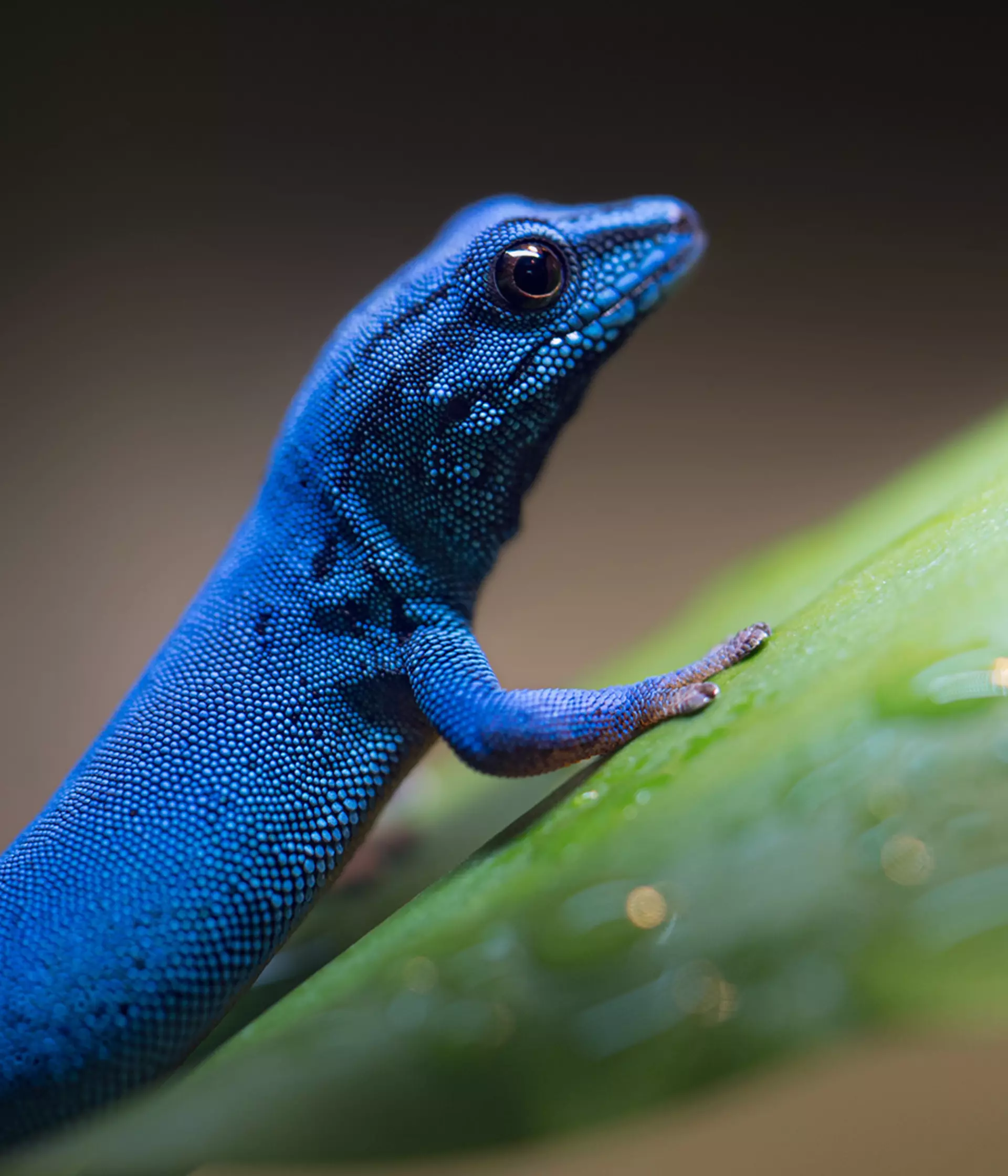
Turquoise dwarf gecko facts
These active little lizards are endemic to Tanzania. They live high up in the leaves of the screwpine tree, a tree associated with swamps and limestone within the tropical forest.
Are there geckos at London Zoo?
London Zoo is home to breeding groups of turquoise dwarf geckos in the Secret Life of Reptiles and Amphibians habitat.
The parents of the geckos at London Zoo were seized from the illegal wildlife trade, and they are part of an EAZA breeding programme.

What do turquoise dwarf geckos eat?
The geckos eat small invertebrates, insects, fruit and nectar.
What do turquoise dwarf geckos look like?
- As their name suggests, the male is a striking electric blue, while the female is a beautiful olive-green. Their undersides are both yellowy-orange.
- They’re tiny, just 5-8cm long, and weigh around 2g as adults and 0.1g when freshly hatched.
What threats do turquoise dwarf geckos face in the wild?
These lizards have an extremely restricted distribution, occurring in an area less than 8km2. They are threatened by deforestation for timber and agriculture, as well as the international pet trade. Alarmingly, at least 15% of the global population was collected for the pet trade between 2005 and 2009.
How are turquoise dwarf geckos being protected?
- There are no known species-specific conservation measures in place for this species, although most of its range lies within protected areas.
- Legislation now prohibits any poaching inside reserves, and animal collection from the wild is illegal.
- The turquoise dwarf gecko is recognised as an EDGE species, and we have supported an EDGE Fellow working on this species.
Reptiles and amphibians at London Zoo
A hub for science and conservation
With eight different habitats, the Secret Life of Reptiles and Amphibians is an educational tour spanning across the globe. From Ethiopian mountain adders to mountain chicken frogs, we have something for every reptile and amphibian lover.
